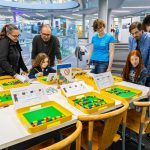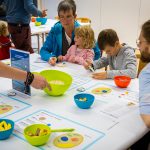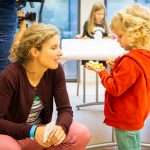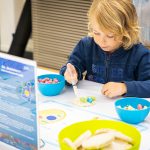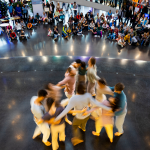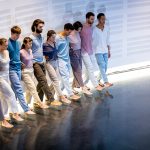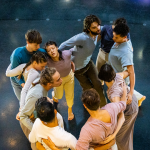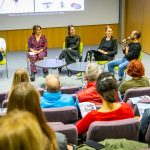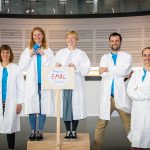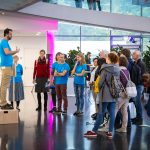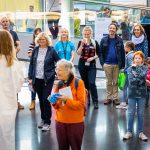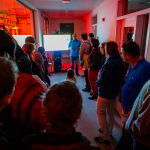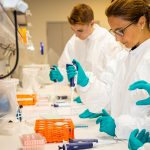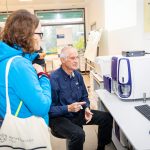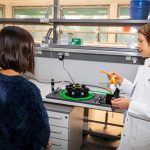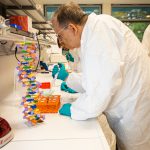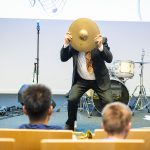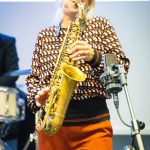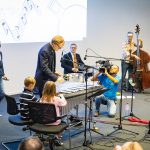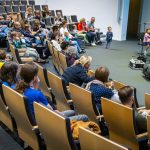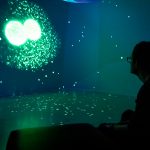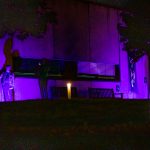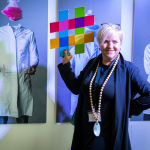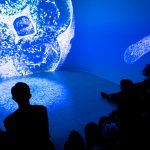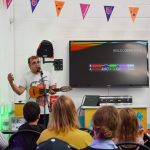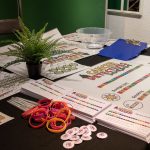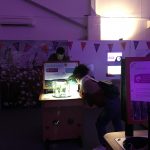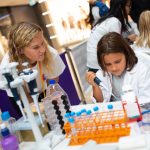
Science for everyone
During European Researchers' Night, everyone was able to become a scientist for a day. Have you ever dreamt of unveiling the secrets of nature?
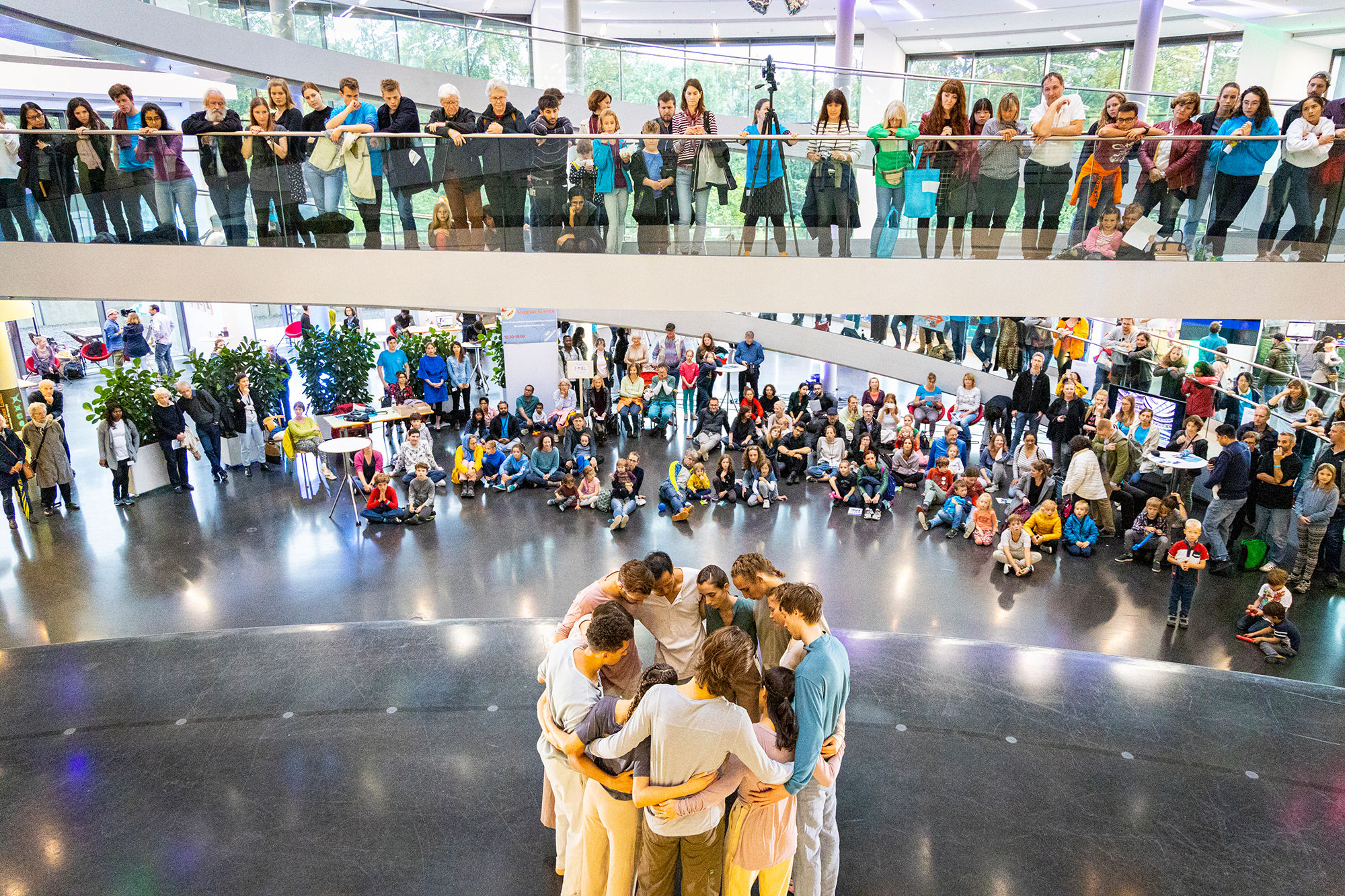
For EMBL’s guests, this dream came closer to reality. With more than 370 cities participating, European Researchers’ Night is Europe’s foremost science festival. This year, Heidelberg and Mannheim joined for the second time.
EMBL’s European Learning Laboratory for the Life Sciences (ELLS) secured the funding from the European Commission and organised the participation of Heidelberg and Mannheim in the festival. Overall, 15 research and cultural institutes joined the ‘Nacht der Forschung Heidelberg | Mannheim’, offering more than 130 activities. These included experiments, discussions, art exhibitions, and performances, all showing science in creative ways. Over 7000 curious visitors delved into the beauty of science. At EMBL, more than 1000 visitors explored the labs and spoke to our scientists. Here is a summary of our activities.
Building blocks of life
Have you ever wondered how the single cell that you started from knows how to form your whole body? The answer is in your DNA. However, your genetic information has to be deciphered and translated. During the Nacht der Forschung, children mastered the art of DNA sequencing. With the help of Lego blocks, they decoded secret messages and learned the importance of their genes. Our scientists were a bit jealous, wishing the real sequencers were also based on Lego. As a cherry on top, children were introduced to cells as they built edible cells made from cookies and candy.
Science and art united
Strolling through the foyer of the EMBL Advanced Training Centre, visitors discovered dancers moving in graceful, exploratory poses. The Dance Theatre Heidelberg presented parts of Iván Pérez’s piece Becoming, described as a physical exploration of elementary communication between bodies. “Wonderfully fluid performance and more than just cells,” said one of the visitors. More than 100 people gathered to watch the performance. Afterwards, scientists and artists discussed how the fields of art and science complement and influence each other. Many guests joined. As one put it: “It is relevant to discuss dance and science because there are many parallels between the two. Also, many things can be discovered about science by comparing it with dance.”
The secret life of scientists
Scientists explore, discover and explain the world. However, what does it mean to be a scientist on a day-to-day basis? We put our scientists on a soapbox and equipped them with a microphone. In funny and quirky stories, young researchers then gave visitors the inside scoop on science. Guests learned about big reveals and other exciting but unknown stories and got a glimpse of life as a scientist. For even more insights, visitors were able to join various tours to discover different workplaces at EMBL and discover the differences between wet labs, microscopy facilities, and computational biology.
On the hunt for genetic samples
Imagine a weird bone is found on EMBL grounds. Is it a lost remnant of some food from the canteen, an ancient skeleton, or something else? As committed scientists, we couldn’t leave this riddle unsolved. Luckily we had help, and our visitors were able to solve the mystery. They extracted DNA from the bone for further investigation. However, this one sample was not enough to be analysed directly: our guest scientists first had to duplicate it using DNA polymerase. Afterwards, they examined the specimen and compared it to samples from excavations in the area.
The sound of science
Suddenly, the sound of a saxophone echoed through the Advanced Training Centre. Alexandra Lehmler and her band turned the Nacht der Forschung into a jazz club. First, they ran a children’s workshop on the basics of jazz. The kids were able to play their songs and experiment with the band. Afterwards, the professionals showed them how to jam and played their songs. Everyone enjoyed the mix of energetic and dreamy music while immersed in the beautiful atmosphere of the night.
Visual campus
All around the Heidelberg campus, small art pieces and projections transported the passersby into the inside of a microscope. Swirling, oversized cells crawled along the walls and ceiling while highlighting the complexity of the smallest elements of life. Tissues, cells, and animals showed science in some of its most impressive forms. Furthermore, several months before the Nacht der Forschung, EMBL scientists and artists from Heidelberg’s Dezernat 16 collaborated in the ‘REMIX – Science and Creative Industry’ project to fuse science and art in one exhibition. During the night, they presented their works and discussed the artistic process and its challenges.
Meanwhile, in the UK…
As part of European Researchers’ Night, EMBL-EBI participated in LifeLab, a consortium that organised events in Cambridge, Peterborough, and Ely, in the United Kingdom. Participants had many opportunities to explore, have fun and be inspired. From science comedy to game shows, DNA extraction to guessing the microbiome, LifeLab contained activities for anyone between the ages of 5 and 105. LifeLab is coordinated by Wellcome Genome Campus Public Engagement, partnering with five Cambridgeshire-based research institutions: The Wellcome Sanger Institute, the Babraham Institute, EMBL’s European Bioinformatics Institute, the University of Cambridge, and the MRC Laboratory of Molecular Biology.
